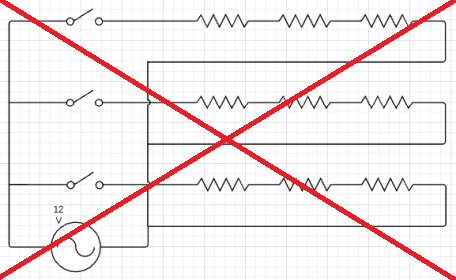I have a 110V/12VAC (USA) transformer for common landscape lighting. We have 3 "zones" that I'd like to turn on/off as desired, two for lights (all LED at the moment) and one for a pond. My plan for now is to run a single 14ga-2 wire to a switch box, then run a line from that to each zone. (1 line in, 3 lines out) Note from the circuit that my intent is to add lamps and pumps n stuff (yes, watching the run length and load) and then cap each line at the end to return the circuit back through ground.
My questions are:
1) Is that the way this should be done?
2) I'd like to control that with a remote, in addition to, or maybe instead of using a common switch. Can someone recommend a small, elegant, and inexpensive solution? Home Automation is all the rage but I think commercial HA is still kinda new and expensive. My house is still full of cheap X10 from the 90's, which I need to start to replace. I've never done a project like this with low voltage AC remote control.
3) Perhaps to complicate this more, this is a Hampton Bay 900W transformer with 3 taps to support 300W each. I'm concerned that if I turn off two of the circuits, and maybe just run a couple fountain pumps during the day (total<50W), that there won't be enough load on the tap. How do we protect against that? I will be putting more load on the total system as time goes on, but I don't expect too much load during the day on any one tap.
Thanks!


